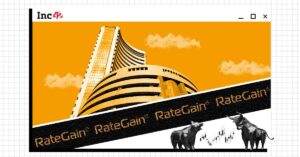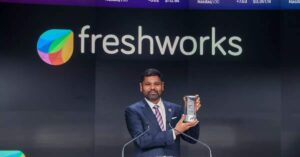The world is moving beyond ‘The Attention Economy’ – the traditional ad-based revenue model that dominated the first two decades of the 21st century.
The world now finds itself facing a sudden explosive growth of influencers, resulting in the emergence of the creator economy. Influencers are working as full-time and part-time creators, putting the influencer marketing industry on an exponential growth trajectory. Interestingly, it is believed that everything in the startup world that took 20 years to happen will happen in the creator economy in the next 10 years.
The creator economy has seen a boom amid the ongoing pandemic. The global influencer marketing market size has doubled since 2019 and it was valued at a record $13.8 billion in 2021. This market is turning the audience into a real asset for brands, giving an exponential boom to the gig economy.
The paradigm shift in the creator economy space has led to a sudden influx of highly ambitious influencers and is helping them monetise their passion.
Navigating the vast creator economy space can be hard for creators unaware of the myriad monetising opportunities available to them. This has led to creators looking for avenues to create engaging content and ways to monetise it for their earnings.
Content subscriptions
A subscription-based model is applied across different segments in content creation – whether individuals or organisations. Many content creators offer their followers subscriptions and memberships to gain access to their exclusive content.
Followers who are willing to pay for additional content or exclusive access become VIP subscribers and help creators generate revenue through their content. This helps creators go beyond the promotional and paid advertisement methods, and provide their followers authentic and informative content in place of a monthly/quarterly fee. On the other hand, followers get exclusive content that is not available widely on public channels.
Commerce tools and platforms
For years, social media platforms have given rise to commerce. Platforms like Pinterest, Instagram, Facebook, etc., have opened avenues for businesses to showcase their product inventory to their targeted customers in real time.
These businesses partner with content creators as a brand and leverage their following and expertise to attract customers for their business. These tools enable buyers to watch content and shop online on the same platform. As a result, the platform makes a commission, the business makes a sale, the creator monetises their content, and the consumer makes a purchase.
Brand collaborations
Perhaps the largest source of income for this community of over 50 million content creators and influencers is through brand collaborations and influencer marketing. Most creators generate their revenue stream through brand deals, sponsorships, and affiliate programmes.
Brands pay these creators to endorse their brand, showcase promotional content and recommend their products or services to their followers. Creators either get a direct fee for producing brand-sponsored content/review or a commission for every purchase their followers make. Brand collaborations are a win-win for both creators and the brands paying them.
Live virtual interactions
Among many other technological advancements, the COVID-19 pandemic has given birth to or accelerated, the virtual experience is gaining huge popularity. Similar to subscriptions, content creators allow followers access to live virtual experiences like one-on-one interactions, live streams, or group discussions.
Live interactions that take place online work similar to ticketed shows or concerts where followers pay for exclusive or early access. This allows creators to generate revenue by displaying their talent to a large audience anytime and anywhere in the world.
Interactive paid communities
Interactive community is a buzzword and will be the next big thing in the content creator space. Online communities gather valuable customer insights that help creators set up a dedicated revenue stream by charging a membership fee for the access.
In the present era of the creator economy, individuals are launching membership-based interactive communities while bringing people with a shared interest together. The more a creator shares high-quality content and launches exercises to keep the members engaged, the higher the possibility of monetising content.
Final thoughts
The world is evolving and so is the creator economy. The billion-dollar industry is moving away from the dominating ad-based revenue model and social platforms such as Facebook, Twitter, and YouTube are posing as the key enablers of the creator economy.
With the help of the right technology, tools and platforms, creators can hone their skills and learn how to create content, engage large audiences, and earn a living based on their passion.
(Disclaimer: The views and opinions expressed in this article are those of the author and do not necessarily reflect the views of YS.)




![Read more about the article [App Friday] Homegrown fitness app Zyoga uses AI to help you practise and perfect yoga postures](https://blog.digitalsevaa.com/wp-content/uploads/2021/08/Zyoga-1-1628158879393-300x150.png)





